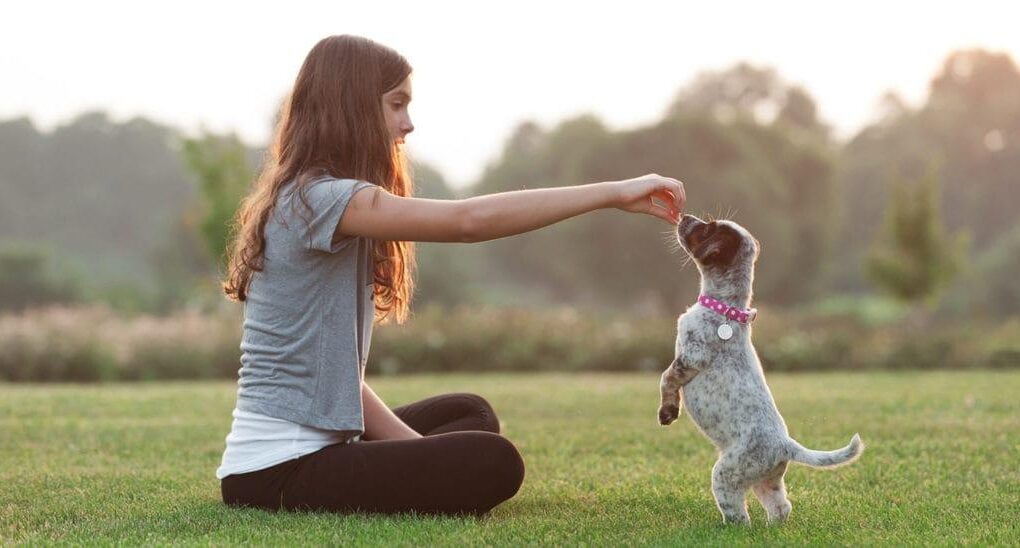Title: The Art of Puppy Cage Training: A Gentle Guide to a Harmonious Home
Welcoming a new puppy into your home is like opening a chapter of joy, mischief, and countless adventures. However, alongside the wagging tails and playful barks comes the responsibility of teaching them about their new environment—a task that can be both exhilarating and daunting. Amidst the myriad of training methods available, puppy cage training stands out not just as a practical solution, but as a nurturing approach that promotes security and comfort for your furry companion.
In this article, we’ll explore the essentials of puppy cage training—what it is, how it works, and the benefits it offers for both you and your pup. Whether you’re a first-time dog owner or a seasoned handler seeking effective strategies, our guide will illuminate the path to fostering a positive relationship with your puppy while ensuring they feel safe and at home. Join us as we delve into the principles of cage training that transform a simple enclosure into a sanctuary of peace and learning.
Table of Contents
- Understanding the Importance of Puppy Cage Training in Development
- Creating a Safe and Comfortable Space for Your Growing Pup
- Effective Techniques for Successful Cage Training Sessions
- Common Challenges and Solutions for a Smooth Training Experience
- Q&A
- The Conclusion
Understanding the Importance of Puppy Cage Training in Development
Puppy cage training is a crucial aspect of developing a well-behaved and secure dog. By introducing your puppy to a cage, you are not merely confining them; you are creating a safe haven that fosters a sense of security. This environment helps alleviate anxiety and encourages positive behavior as they learn to associate their cage with comfort and safety. Moreover, cage training aids in potty training, as dogs instinctively avoid soiling their living space. Over time, they grasp the concept of where it’s appropriate to relieve themselves, which is invaluable for maintaining a clean home.
Beyond the immediate benefits, cage training serves several developmental roles in a puppy’s life. It teaches them boundaries, instills a sense of routine, and promotes independence. Here are some essential aspects to consider:
- Establishing Boundaries: A cage helps your puppy learn their limits and understand the importance of personal space.
- Facilitating Routine: Regularly using the cage helps establish a consistent schedule for meals, playtime, and rest.
- Encouraging Independence: Allowing your puppy time in their cage can help them become more self-reliant and less anxious when left alone.
Creating a Safe and Comfortable Space for Your Growing Pup
Creating a safe haven for your puppy is essential during their initial growth phases. Choosing the right location for the crate is crucial; opt for a quiet corner of your home where they can feel secure and undisturbed. Decorate their crate with soft blankets and chew-proof toys to create a welcoming atmosphere. Consider the following tips to make the cage a comfort zone:
- Use positive reinforcement: Reward your puppy with treats and praise when they enter the crate willingly.
- Gradual introduction: Start with short periods and gradually increase the time spent inside the crate.
- Avoid using the crate as punishment: This fosters negative associations with their safe space.
In addition to a cozy setup, it’s vital to monitor and adjust the environment as your puppy grows. For instance, investing in a size-adjustable crate can ensure that it remains suitable as they transition from a tiny ball of fur to a spirited young dog. Here are some key considerations when choosing a crate:
| Crate Type | Pros | Cons |
|---|---|---|
| Wire Crate | Good ventilation, visibility | Less cozy in cold weather |
| Plastic Crate | More privacy, portable | Limited airflow |
| Soft-Sided Crate | Lightweight, easy to transport | Not chew-proof |
Effective Techniques for Successful Cage Training Sessions
To ensure productive cage training sessions for your puppy, it’s essential to create a positive and encouraging environment. Begin by introducing the cage as a cozy, inviting space rather than a place of confinement. You can accomplish this by placing a comfortable bed or blanket inside, along with a few toys that your puppy loves. Treats also play a crucial role; reward your puppy for entering the cage voluntarily to reinforce the idea that it’s a safe and enjoyable area. Maintaining a calm demeanor is paramount; your puppy will be more receptive to training if they feel relaxed and secure.
Consistency is the key to successful training. Establish a routine that includes regular, short sessions that progressively increase in duration as your puppy grows comfortable with the cage. Incorporate these techniques into your training plan:
- Use positive reinforcement immediately after your puppy shows desired behaviors.
- Keep training sessions brief, especially in the early stages, to prevent frustration.
- Gradually increase the time your puppy spends in the cage, while providing distraction-free environments.
To track your puppy’s progress, consider using a simple table:
| Session Number | Duration in Cage (Minutes) | Comments/Observations |
|---|---|---|
| 1 | 5 | Calm entry, accepted treats. |
| 2 | 10 | Slightly fidgety, but settled. |
| 3 | 15 | Played with toys, showed interest in environment. |
Common Challenges and Solutions for a Smooth Training Experience
Training a puppy to use a cage can present several challenges that may deter pet owners from following through with this beneficial process. One common issue is anxiety; many puppies feel uncomfortable in the cage, which can lead to resistance. To combat this, it’s essential to create a positive association by using positive reinforcement techniques. For example, rewarding your puppy with treats and praise when they enter the cage on their own can help foster an inviting atmosphere. Additionally, ensuring the cage is the right size is key; it should be snug enough to feel secure but spacious enough for your puppy to stand, turn around, and lie down comfortably.
Another hurdle owners may encounter is inconsistency in training schedules. Puppies thrive on routine, and erratic training can lead to confusion and setbacks. Developing a clear and consistent training plan is vital for success. Consider breaking down training into simple, achievable goals, such as:
- Short, frequent training sessions - Aim for sessions lasting 5-10 minutes several times a day.
- Regular feeding times - This helps set a schedule for when your puppy might need to use the cage.
- Encouraging exploration – Allow your puppy to explore the cage with the door open initially to reduce fear.
For those looking to track progress, a simple table can be helpful:
| Puppy Name | Days of Successful Cage Training | Notes |
|---|---|---|
| Rex | 5 | Enjoys treats in the cage. |
| Luna | 3 | Still hesitant, needs more encouragement. |
| Bella | 7 | Quick learner, loves her cozy space! |
Q&A
Q&A on Puppy Cage Training
Q: What is puppy cage training, and why is it important?
A: Puppy cage training, often referred to as crate training, is a method used to help puppies learn how to feel comfortable and secure in a designated space. It provides them with a safe haven and helps in housebreaking efforts by teaching them to hold their bladder. Additionally, it can prevent destructive behaviors when you’re unable to supervise your puppy.
Q: At what age can I start cage training my puppy?
A: You can begin crate training as soon as you bring your puppy home, typically around 8 weeks of age. However, the key is to ensure that the crate is appropriately sized for your puppy; they should be able to stand, turn around, and lie down comfortably.
Q: How do I introduce my puppy to the crate?
A: Start by making the crate inviting. Place some soft bedding and a few toys inside. Encourage your puppy to explore it by using treats or toys. Leave the door open at first, allowing them to come and go freely. Gradually, as they become more comfortable, you can begin to close the door for short periods during feeding times or play.
Q: How long can I leave my puppy in the crate?
A: Puppies have limited bladder control, so they shouldn’t be confined for long periods. As a general rule, a puppy can hold their bladder for approximately one hour for every month of age, up to 6-8 hours for adult dogs. Always ensure they have opportunities to relieve themselves outside.
Q: What should I do if my puppy barks or whines in the crate?
A: It’s common for puppies to express their discomfort or anxiety through barking or whining. Initially, try to ignore the noise, as responding can reinforce the behavior. Ensure that your puppy has exercised before crate time and that they have been taken outside to relieve themselves. If the behavior persists, you may need to re-evaluate their comfort level in the crate or consult a trainer for additional strategies.
Q: Can crate training help with separation anxiety?
A: Yes, crate training can be beneficial for puppies that show signs of separation anxiety, as it provides a safe space where they can feel secure when you’re away. Gradually increasing the time spent in the crate while you are home can help your puppy associate it with positive experiences.
Q: Are there any alternatives to crate training?
A: While crate training can be quite effective, there are other options as well. Some owners choose to use playpens or designated puppy-proof areas in their homes. However, these alternatives may not be as effective for housebreaking or providing a safe retreat as a well-trained crate.
Q: How can I ensure my puppy views the crate as a positive place?
A: The key is positive reinforcement. Use treats, praise, and toys to create a positive association with the crate. Avoid using it as a punishment, as this can lead to negative feelings about the space. You can also feed your puppy their meals in the crate to further encourage a positive experience.
Q: What if my puppy never seems to adjust to the crate?
A: It’s essential to be patient and consistent. Some puppies may take longer to adjust than others. Consider consulting a professional dog trainer or a behaviorist if your puppy shows extreme resistance or fear, as they can provide tailored strategies to help your puppy feel more at ease.
Q: What are the long-term benefits of cage training?
A: Successfully crate training your puppy can lead to numerous long-term benefits, including increased independence, less anxiety, better housebreaking success, and a safe place for your dog during travel or emergencies. Ultimately, it fosters a calm and well-adjusted adult dog.
puppy cage training can be a rewarding experience for both the puppy and the owner if approached with care and kindness. By following fundamental principles and remaining patient, you can help your puppy feel right at home in their new crate!
The Conclusion
As we conclude our exploration of puppy cage training, it’s essential to remember that each pup is unique, and every journey is different. Cage training, when approached thoughtfully and with patience, can become a positive experience for both you and your furry companion. By transforming the crate into a safe haven rather than a confinement, you’re not just teaching your puppy about boundaries, but also fostering trust and security. With the right techniques and a sprinkle of love, you can help your puppy understand that their crate is a cozy retreat, setting the stage for a well-adjusted and happy adult dog. So, embrace the process, celebrate the small victories, and enjoy the rewarding bond that crate training can help you build. Here’s to the adventures ahead, filled with wagging tails, joyous barks, and the lasting companionship of your well-trained furry friend!



